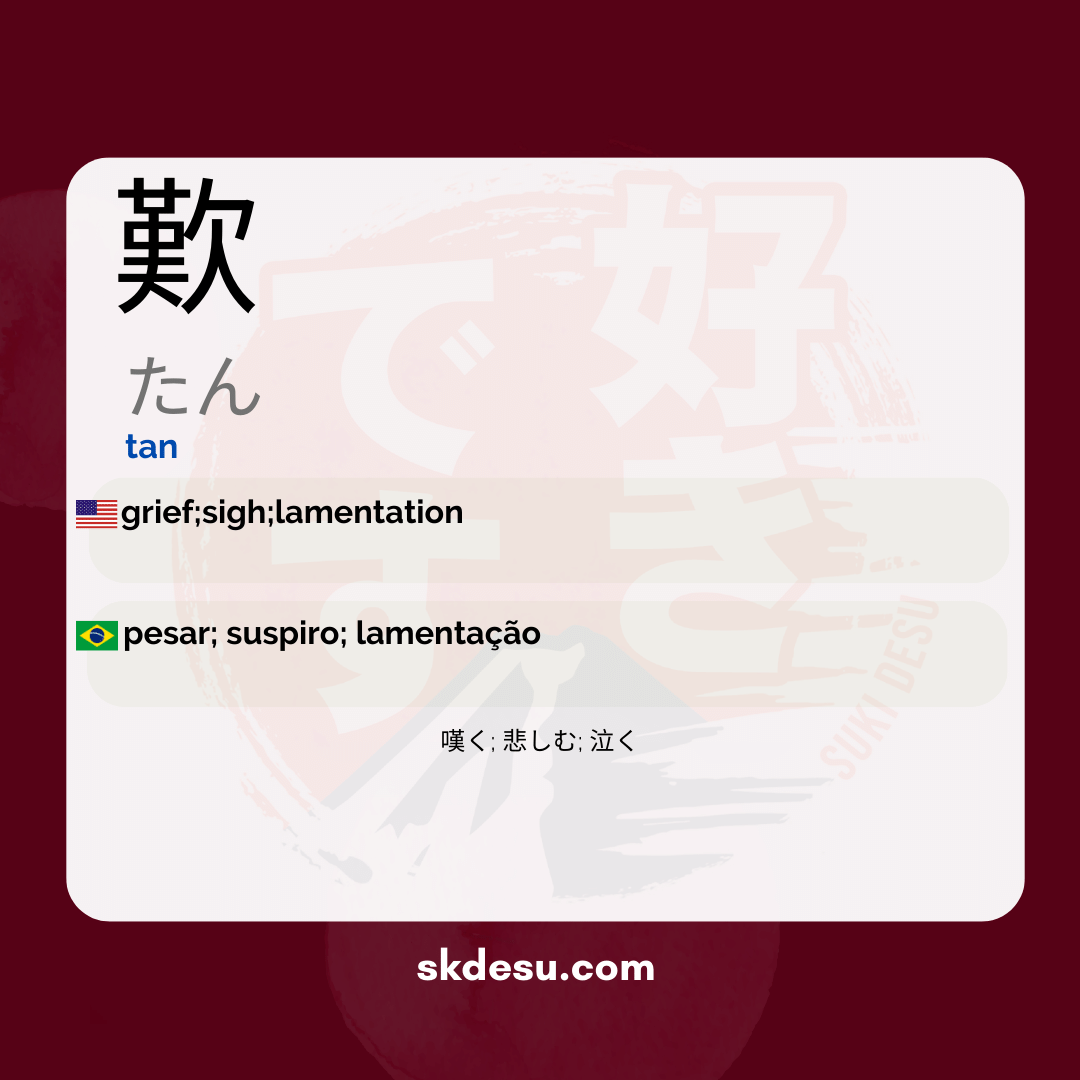Translation and Meaning of: 歎 - tan
The Japanese word 歎[たん] may seem simple at first glance, but it carries deep nuances that reflect aspects of Japanese culture and language. In this article, we will explore its meaning, origin, and how it is used in everyday life. If you are learning Japanese or just curious about this expression, understanding its context can enrich your knowledge.
In addition to revealing the translation and writing of 歎[たん], we will explore its use in different situations, from informal conversations to more literary expressions. Suki Nihongo, one of the best online Japanese dictionaries, offers practical examples that help reinforce the vocabulary. Shall we begin?
Meaning and origin of 歎[たん]
The word 歎[たん] is a noun that means "lament," "sigh," or "expression of sadness." It is connected to feelings of grief or disappointment, often used in contexts where there is a melancholic reflection on something. Its origin dates back to the kanji 歎, which alone already carries the idea of a deep sigh or lamentation.
The kanji 歎 is composed of the radical 欠 (which represents "opening" or "lack") combined with 難 (difficulty). This combination reinforces the notion of something that causes sadness or frustration. It is worth noting that, although it is a less common term in everyday life, it appears in literary texts and more formal speeches, giving a poetic or dramatic tone to the phrase.
Everyday use and practical examples
In modern Japanese, 歎[たん] is not a word frequently used in casual conversations. Its usage is more common in literary works, songs, or speeches that aim to convey a more intense emotion. For example, it may appear in phrases such as "人生の歎" (lament of life), expressing a deep reflection on existential challenges.
An interesting fact is that, although it is rare to hear it in daily life, some animes and historical dramas use 歎 to give a more dramatic or nostalgic tone to the scenes. If you watch productions that depict feudal periods or emotional plots, you may come across this word in dialogues or narrations.
Tips for memorizing and using 歎[たん]
For those learning Japanese, a good strategy is to associate 歎[たん] with situations involving sadness or frustration. One way to fix it is to create flashcards with example sentences or use it in essays when the theme is more introspective. Another tip is to look for songs or poems that include it, as the artistic context helps to remember its meaning.
It is important to remember that, being a more formal and literary term, 歎 should not be used in casual conversations without reason. If the goal is to express sadness in everyday situations, words like 悲しい (kanashii) or 残念 (zannen) are more natural options. Nevertheless, knowing 歎 enriches vocabulary and allows for a better understanding of classical texts and Japanese cultural expressions.
Vocabulary
Expand your vocabulary with related words:
Synonyms and similar words
- 嘆く (nageku) - Express sorrow or despair; lament.
- 悲しむ (kanashimu) - Feel sadness; suffer emotionally.
- 泣く (naku) - To cry; to express pain or emotion through tears.
Related words
Romaji: tan
Kana: たん
Type: noun
L: jlpt-n1
Translation / Meaning: to weight; Sigh; lamentation
Meaning in English: grief;sigh;lamentation
Definition: "To feel and express something in your heart while feeling sadness and nostalgia."
Quick Access
- Vocabulary
- Writing
- Sentences
How to Write in Japanese - (歎) tan
See below a step-by-step guide on how to write the word by hand in Japanese. (歎) tan:
Example Sentences - (歎) tan
See below some example sentences:
Nenhum resultado encontrado.
Other Words of this Type: noun
See other words from our dictionary that are also: noun

